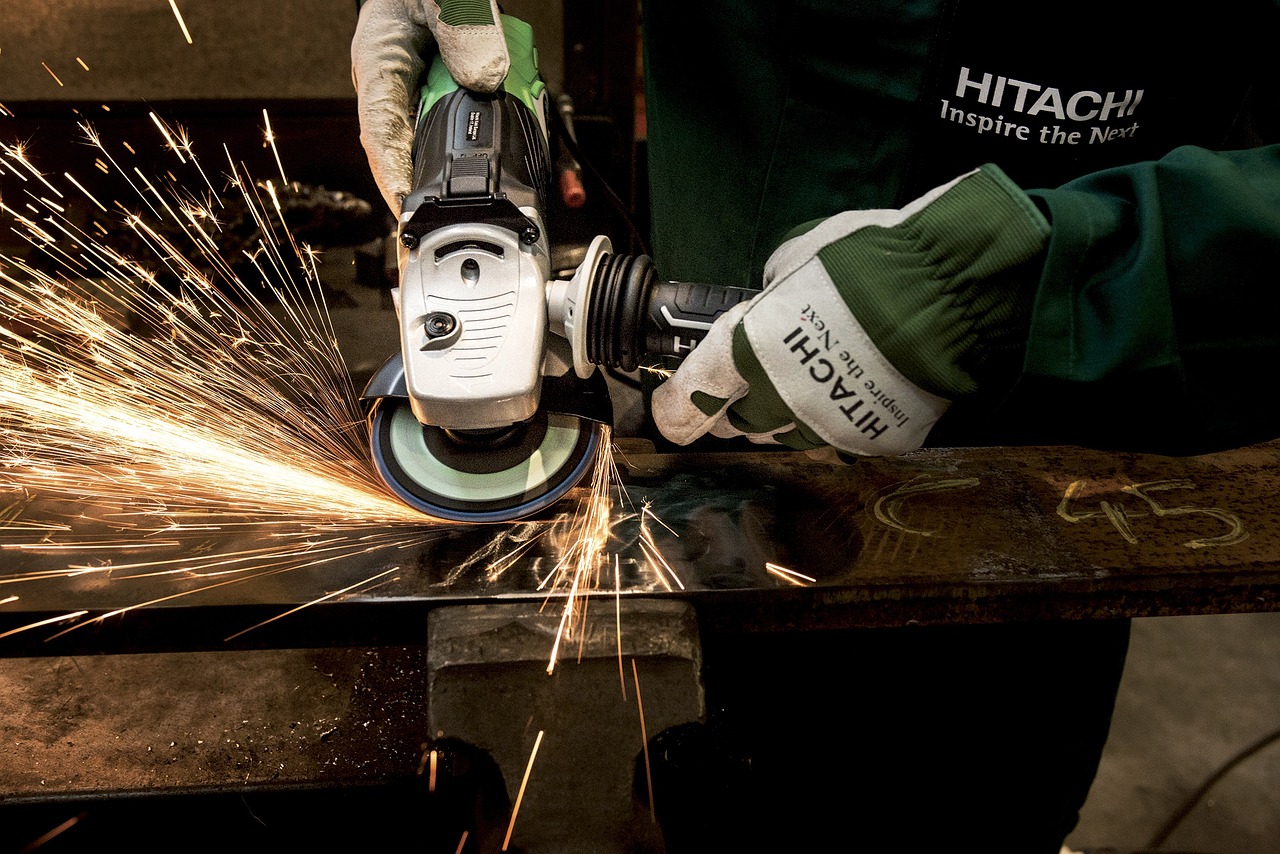Business
Is Real Estate Crowdfunding Worth It?

Real estate crowdfunding has become an increasingly popular way for investors to get involved in real estate deals that were previously only accessible to wealthy individuals or institutional investors. Through real estate crowdfunding platforms, investors can pool their money with others to invest in commercial or residential properties for a share of the rental income, profits from a sale, etc. While real estate crowdfunding offers exciting opportunities, it’s understandable that investors have questions about whether it’s really worth it. There are pros and cons to evaluate when deciding if real estate crowdfunding aligns with your investment goals and risk tolerance.
Lower Investment Minimums Open Access
One of the biggest benefits of real estate crowdfunding is that the investment minimums are much lower than what you would need to invest on your own. Whereas investing in physical real estate properties often requires tens or hundreds of thousands of dollars, real estate crowdfunding deals can have minimums from $500 to $10,000. This allows investors who don’t have tons of capital to diversify into real estate. Rather than saving up for years to buy one rental property, you could invest small amounts into multiple properties now. Real estate crowdfunding democratizes access to deals that were previously only available to the wealthy.
Portfolio Diversification
In addition to lower minimum investments, real estate crowdfunding makes it simpler to build a diversified real estate portfolio. Choosing which properties to purchase on your own requires extensive research to select assets in different markets, with different strategies (residential vs. commercial), and in different parts of the real estate cycle. With crowdfunding, you can browse pre-vetted deals online and invest in a range of real estate projects to mitigate risk. Geographic diversification is easier through national and global crowdfunding platforms. Balancing residential, commercial, retail, and other types of real estate projects lets you diversify across sectors.
Passive Income Potential
Many investors are attracted to real estate crowdfunding for passive income opportunities. Rather than taking on the responsibilities of being a landlord, you can earn income from properties you invest in through a crowdfunding platform without having to do the hands-on work. Top real estate crowdfunding platforms handle property management, leasing, maintenance, legal compliance, rent collection, and more. You get the benefits of income generation without the day-to-day management burden. Real estate investments can produce steady cash flow month-over-month or via annual dividend payments.
Professional Vetting
Leading real estate crowdfunding platforms have teams of experienced professionals who vet each deal before listing it for everyday investors. They conduct due diligence to assess risks, validate business plans, evaluate sponsors/developers, audit financials, look at comparable deals, etc. This expert pre-screening gives investors more confidence. You can lean on the knowledge of these teams who assess potential investments full-time rather than figuring it all out solo as an individual investor. Their strict listing standards also weed out less attractive opportunities. In addition, you also get to enjoy real estate crowdfunding tax benefits.
Drawbacks To Consider
While real estate crowdfunding offers some excellent benefits, there are a few potential drawbacks to consider as well:
- Illiquidity: Most real estate crowdfunding investments are illiquid, meaning there isn’t an easy way to cash out your investment right away. You may have to hold it to maturity.
- Lower returns than direct ownership: The tradeoff for passive real estate investing is that returns are typically a bit lower than owning and managing properties yourself.
- Risks still exist: Vetting and diversification reduce risks, but real estate losses are still possible if deals don’t pan out as expected.
- Fees: Platform fees, fund management fees, carry charges, etc. can erode returns to some degree.
- Tax headaches: You’ll likely receive multiple K-1s to report profits/losses, which can complicate taxes.
Is Real Estate Crowdfunding Right For You?
If you don’t have hundreds of thousands to invest, real estate crowdfunding allows you to gain exposure to assets that would be otherwise out of reach. It’s an easy way to build a balanced portfolio across different markets and sectors. Though returns may be a bit lower than direct ownership, passive income can be attractive for hands-off investors. Weigh the benefits and drawbacks relative to your specific investment objectives. For many, real estate crowdfunding does provide strong risk-adjusted returns and portfolio diversification without requiring huge upfront capital. If you take the time to evaluate offerings and diversify prudently, it can absolutely be worth considering.
Business
13 Reasons Investors Are Watching Phoenix Energy’s Expansion in the Williston Basin

As energy security becomes a growing priority in the United States, companies focused on domestic oil production are gaining attention from investors. One such company is Phoenix Energy, an independent oil and gas company operating in the Williston Basin, a prolific oil-producing region spanning North Dakota and Montana.
Phoenix Energy has established itself as a key player in this sector, expanding its footprint while offering structured investment opportunities to accredited investors. Through Regulation D 506(c) corporate bonds, the company provides investment options with annual interest rates ranging from 9% to 13%.
Here are 13 reasons why Phoenix Energy is attracting investor interest in 2025:
1. U.S. energy production remains a strategic priority
The global energy landscape is evolving, with a renewed focus on domestic oil and gas production to enhance economic stability and reduce reliance on foreign energy sources. The Williston Basin, home to the Bakken and Three Forks formations, continues to play a critical role in meeting these demands. Phoenix Energy has established an operational footprint in the basin, where it is actively investing in development and production.
2. Investment opportunities with fixed annual interest rates
Phoenix Energy bonds offer accredited investors annual interest rates between 9% and 13% through Regulation D 506(c). These bonds help fund the company’s expansion in the Williston Basin, where it acquires and develops oil and gas assets.
3. Record-breaking drilling speeds in the Williston Basin
Phoenix Energy has made significant strides in drilling efficiency, ranking among the fastest drillers in the Bakken Formation as of late 2024. By reducing drilling times, the company aims to optimize operations and improve overall production performance.
4. Expansion of operational footprint
Since becoming an operator in September 2023, Phoenix Energy has grown rapidly. As of March 2025, the company has 53 wells drilled and 96 wells planned over the next 12 months.
5. Surpassing production expectations
Phoenix Energy’s oil production has steadily increased. By mid-2024, its cumulative production had exceeded 1.57 million barrels, outpacing its total output for 2023. The company projected an exit rate of nearly 20,000 barrels of oil equivalent per day by the end of March 2025.
6. High-net-worth investor offerings
For investors seeking alternative investments with higher-yield opportunities, Phoenix Energy offers the Adamantium bonds through Reg D 506(c), which provides corporate bonds with annual interest rates between 13% and 16%, with investment terms ranging from 5 to 11 years, and a minimum investment of $2 million.
7. Experienced team with industry-specific expertise
Phoenix Energy’s leadership and technical teams include professionals with decades of oil and gas experience, including backgrounds in drilling engineering, land acquisition, and reservoir analysis. This level of in-house expertise supports the company’s ability to evaluate acreage, manage operations, and execute its long-term development plans in the Williston Basin.
8. Focus on investor communication and understanding
Phoenix Energy prioritizes clear investor communication. The company hosts webinars and provides access to licensed professionals who walk investors through the business model and operations in the oil and gas sector. These efforts aim to help investors better understand how Phoenix Energy deploys capital across mineral acquisitions and operated wells.
9. Managing market risk through strategic planning
The energy sector is cyclical, and Phoenix Energy takes a structured approach to risk management. The company employs hedging strategies and asset-backed financing to help mitigate potential fluctuations in the oil market.
10. Commitment to compliance
Phoenix Energy conducts its bond offerings under the SEC’s Regulation D Rule 506(c) exemption. These offerings are made available exclusively to accredited investors and are facilitated through a registered broker-dealer to support adherence to federal securities laws. Investors can review applicable offering filings on the SEC’s EDGAR database.
11. Recognition for business practices
As of April 2025, Phoenix Energy maintains an A+ rating with the Better Business Bureau (BBB) and is a BBB-accredited business. The company has also earned strong ratings on investor review platforms such as Trustpilot and Google Reviews, where investors often highlight clear communication and transparency.
12. A family-founded business with a long-term vision
Led by CEO Adam Ferrari, Phoenix Energy operates as a family-founded business with a focus on long-term investment strategies. The company’s leadership emphasizes responsible growth and sustainable development in the Williston Basin.
13. Positioned for long-term growth in the oil sector
With U.S. energy demand projected to remain strong, Phoenix Energy is strategically positioned for continued expansion. The company’s focus on efficient drilling, financial discipline, and structured investment offerings aligns with its goal of building a resilient and growth-oriented business.
Final thoughts
For investors looking to gain exposure to the U.S. oil and gas sector, Phoenix Energy presents an opportunity to participate in a structured alternative investment backed by the company’s operational expansion in the Williston Basin.
Accredited investors interested in learning more can attend one of Phoenix Energy’s investor webinars, which are hosted daily throughout the week. These sessions provide insights into market trends, risk management strategies, and investment opportunities.
For more information, visit the Phoenix Energy website.
Phoenix Capital Group Holdings, LLC is now Phoenix Energy One, LLC, doing business as Phoenix Energy. The testimonials on review sites may not be representative of other investors not listed on the sites. The testimonials are no guarantee of future performance or success of the Company or a return on investment. Alternative investments are speculative, illiquid, and you may lose some or all of your investment. Securities are offered by Dalmore Group member FINRA/SIPC. Dalmore Group and Phoenix Energy are not affiliated. See full disclosures.
This article contains forward-looking statements based on our current expectations, assumptions, and beliefs about future events and market conditions. These statements, identifiable by terms such as “anticipate,” “believe,” “intend,” “may,” “expect,” “plan,” “should,” and similar expressions, involve risks and uncertainties that could cause actual results to differ materially. Factors that may impact these outcomes include changes in market conditions, regulatory developments, operational performance, and other risks described in our filings with the U.S. Securities and Exchange Commission. Forward-looking statements are not guarantees of future performance, and Phoenix Energy undertakes no obligation to update them except as required by law.
-

 Tech4 years ago
Tech4 years agoEffuel Reviews (2021) – Effuel ECO OBD2 Saves Fuel, and Reduce Gas Cost? Effuel Customer Reviews
-

 Tech6 years ago
Tech6 years agoBosch Power Tools India Launches ‘Cordless Matlab Bosch’ Campaign to Demonstrate the Power of Cordless
-

 Lifestyle6 years ago
Lifestyle6 years agoCatholic Cases App brings Church’s Moral Teachings to Androids and iPhones
-

 Lifestyle4 years ago
Lifestyle4 years agoEast Side Hype x Billionaire Boys Club. Hottest New Streetwear Releases in Utah.
-

 Tech6 years ago
Tech6 years agoCloud Buyers & Investors to Profit in the Future
-

 Lifestyle5 years ago
Lifestyle5 years agoThe Midas of Cosmetic Dermatology: Dr. Simon Ourian
-

 Health6 years ago
Health6 years agoCBDistillery Review: Is it a scam?
-

 Entertainment6 years ago
Entertainment6 years agoAvengers Endgame now Available on 123Movies for Download & Streaming for Free
